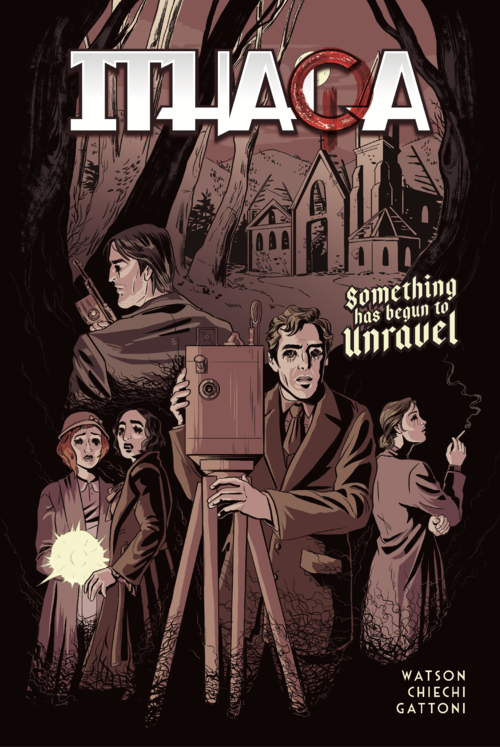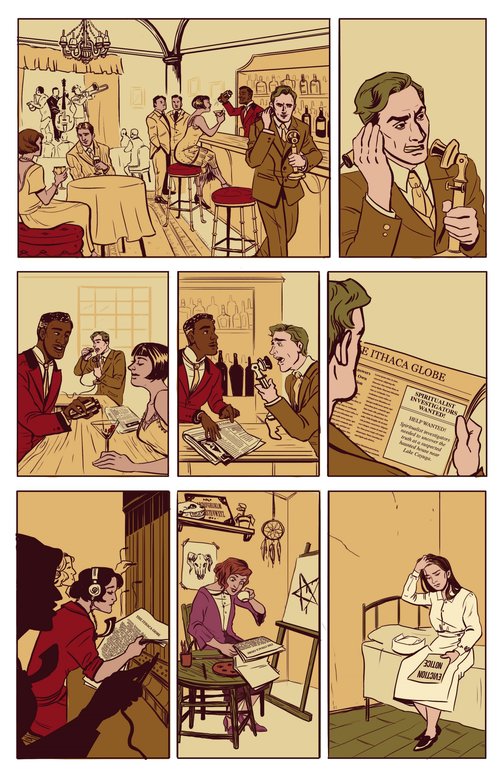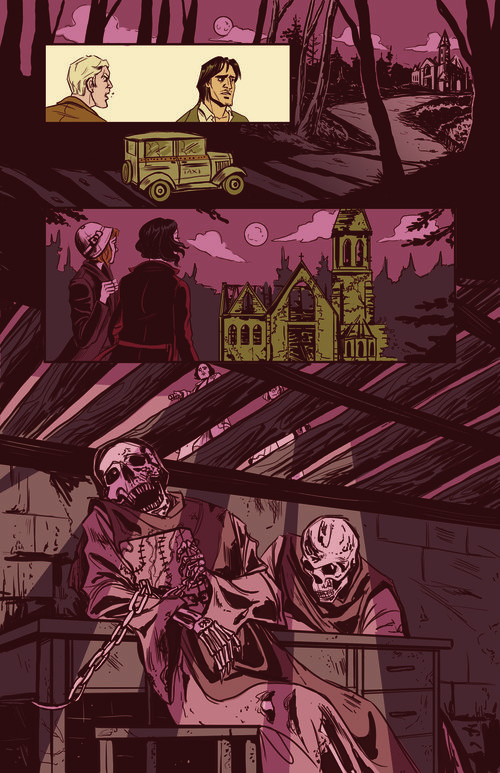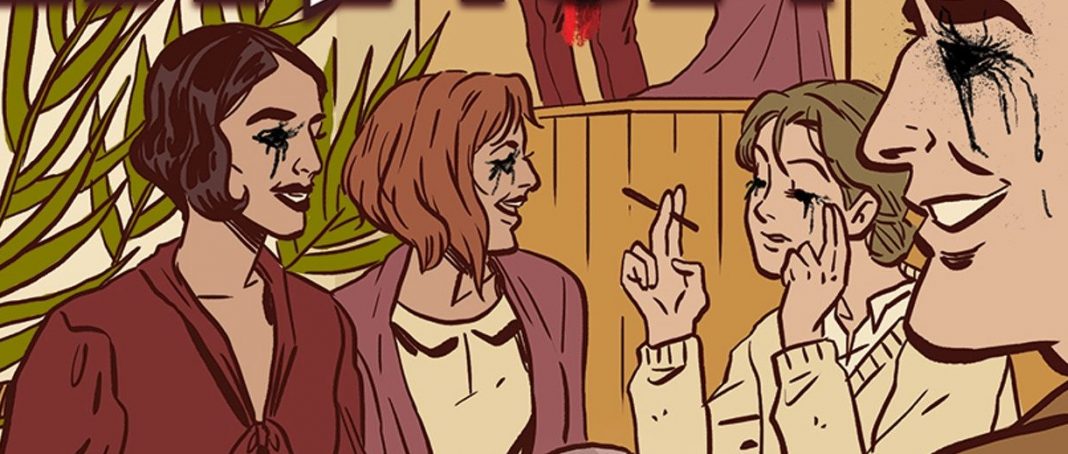Michael Watson and Theresa Chiechi’s Ithaqa is what comes to mind when I think of horror in the 1920s. It evokes the same fears and images found in the stories of HP Lovecraft or the early issues of Weird Tales, where dapperly dressed adventurers discover terrors beyond comprehension. The adventure element is important as these stories never sacrificed their own sense of wonder to ramp up the horror. Instead, we were just as amazed as the fictional characters were when they discovered a new monster or spirit. Ithaqa captures all of that, but not without making it its own.

Ithaqa follows a down on his luck filmmaker called Mookie Smitts and three women by the names of Hazel, Ruth, and Margaret. They all possess uniquely defiant personalities with convictions and firm opinions on matters of spiritualism, temperance, and investigative integrity. Each character can fill the pages of an entire comic book series alone and it makes for Ithaqa’s strongest storytelling component.
Each with their own agenda, the group sets out to investigate a number of strange deaths that occurred on the newly acquired property of one Barnaby Hayes. Mookie sees an opportunity to turn the job into a clandestine horror film while the other three hope to earn some much needed money while confirming their beliefs one way or the other.

Watson and Chiechi take their time establishing the Roaring Twenties’ setting. Their approach suggests characters work best as a reflection of their times so long as they’re convincingly brought to life. Great care has gone to capture that everyday lightness that characterizes 1920s literature. It’s as if though nothing could ever go wrong in such an era, and yet nothing is at it seems. That decade didn’t do a good job of hiding away the darkness, an idea the creative team behind the book seems to be very aware of.
The book’s horror latches on to the setting quite well, presenting the darker elements at play in the story as visually corrupt. Watson and Chiechi create strange scenarios and eerie occurrences that echo in certain horror classics such as Don Coscarelli’s Phantasm (1979), in terms of a particular character resembling the film’s iconic Tall Man, and Stuart Gordon’s Dagon (2001), especially when considering the constant sense of dread that lingers over the narrative once the horror kicks in.
The book’s pacing has to be commended as well. Ithaqa is in no hurry to reveal all of its secrets, which makes every new discovery land harder. This isn’t to say the story’s a slow burn or too lax. There’s a sense of restrained urgency, if you will, as each character slowly approaches an inevitable brush with the supernatural. They desperately want to solve the mystery of the unexplained deaths regardless of whatever stands in the way, but not at the expense of getting it wrong. Knowing what’s hanging in the balance allows readers to fear for the lives of each character, further heightening the tension that helps carry the story.

On the matter of the comic’s horror sequences, Ithaqa might honor classic horror, but it’s also unafraid to get violent and gruesome when it needs too. Since the pacing is so measured and the storytelling so meticulously crafted in terms of when to let loose on its reveals, horror encounters put each character in real danger. The stakes rise dramatically and the mood changes so as to consider the real consequences of a potential death. It’s a showcase of classic ideas infused with more modern sensibilities to conjure real terror.
Fans of old-school horror will find a lot to love in Ithaqa. It’s a story that takes its time to develop its characters so that readers can feel their fears and their losses more profoundly when they happen. It possesses a literary spirit in some regards, but it is a very welcoming read and eager to unsettle its readers. It’s a book that earns its spot among your horror comics collection.
You can buy issues 1-3 of Ithaqa through the comic’s main website by clicking here.








